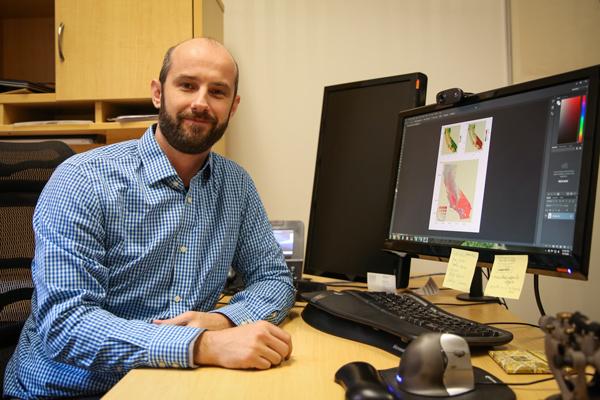A GW professor developed a new model to predict wildfire damage in California.
The study, published in PLOS ONE – a scientific journal run by the Public Library of Science – last week, examines human behavior and climate change to develop a model for safety officials to predict how much land is at risk of burning in California through 2050. Michael Mann, an assistant professor of geography and the lead researcher on the study, said he started the research after noticing a lack of interest in the human causes of wildfire.
Mann said humans start the majority of fires and the average cost of preventing and extinguishing fires in California is over $160 million annually.
“Wildfire modeling has traditionally been the realm of fire scientists and ecologists,” Mann said. “But the story is much more complex than that because today’s wildfires are more often started by humans than not.”
Mann said that the model he created examines the historical patterns of wildfires across California to estimate the relationships between wildfire, climate and human determinants.
This model is unusual because it includes how housing density and development over the next 50 years affect the landscape and can lead to wildfires, Mann said.
“We also include controls for the influence of campgrounds, different management practices on public and private lands, and the distance to population centers where fire stations are typically located,” Mann said.
Mann said he has been researching wildfires for about four years. He started his research as a postdoctoral student at the University of California, Berkeley and then continued when he came to GW.
The Nature Conservancy of California funded the research project.
The next step in his research is to tie the statistical model of wildfires back to economic systems to understand the cost associated with wildfire as people build in wildfire-prone areas, he said.
“We are interested in the long-term costs of wildfire suppression and damages,” Mann said. “Keep in mind that a bad fire season in California can cost over $1 billion.”
The co-authors on Mann’s paper include Max Moritz, who was his postdoctoral advisor at University of California, Berkeley, other members of his lab, hydrologists at the United States Geological Survey, an economist at University of California, Berkeley and a former graduate student in the geography department, Emmalee Dolfi.
Dolfi, who received her master’s in geography from GW last year, said she began working with Mann on this research in 2014. She analyzed human impacts on wildfire patterns that included statistical and spatial analyses using population and wildfire statistics and climate data.
“Our interests aligned quite well from the get-go, so we ended up working together on many projects,” Dolfi said. “This research can help the residents of California prepare for future impacts as well as encourage similar research in other parts of the world.”







